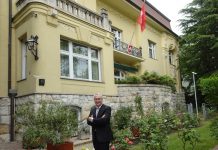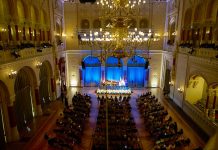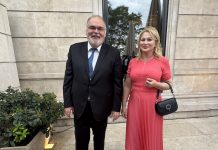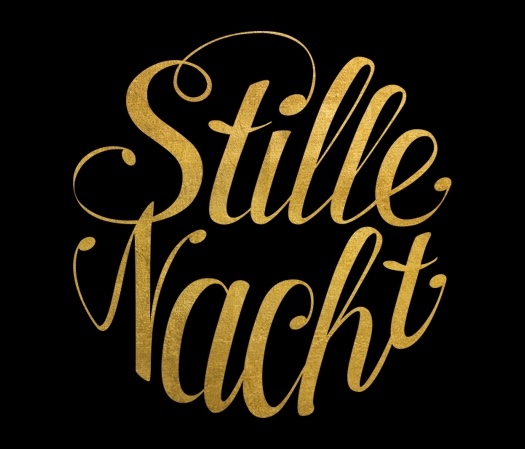“The Christmas Song Heard ‘Round the World”
Source: Diplomatic Magazine

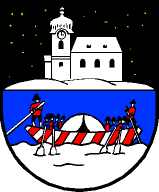
In 2018 Austria celebrated the 200th anniversary of the world’s most famous Christmas carol, “Silent Night”, a magic song that promises consolation and gives hope again and again.
For two centuries, the song has crossed borders and overcome crises, connecting people no matter their origin, age, religion or country. Today, the song is performed in over 300 languages and dialects.
In 1818 at Christmas Eve the carol “Stille Nacht! Heilige Nacht” was first heard in a village church in Oberndorf, near Salzburg, in Austria. The congregation at that Midnight Mass in St. Nicholas Church listened as the voice of Father Joseph Mohr – assistant pastor and Franz Xaver Gruber – choir director rang through the church, accompanied by Father Mohr’s guitar. The choir repeated the last two lines of all six verses. On that Christmas Eve, a song was born that has reached the hearts of people throughout the world.
The German text of the carol, known as “Silent Night”, was written by Joseph Mohr in 1816, when he was a young priest of a church in Mariapfarr. We keep asking what inspired him to pen his poetic version of the Christ Child’s birth. Fortunately, he didn’t leave it behind when he was transferred to Oberndorf next year. In 1818, he travelled to the home of musician-schoolteacher Franz Xaver Gruber, who lived in nearby Arnsdorf. He showed his poem to his friend and asked him to compose a melody and guitar accompaniment so that it could be sung at Midnight Mass. His reason for wanting the new carol is unknown. Maybe the organ would not work, or the pastor, who loved guitar music, wanted a new song for Christmas.
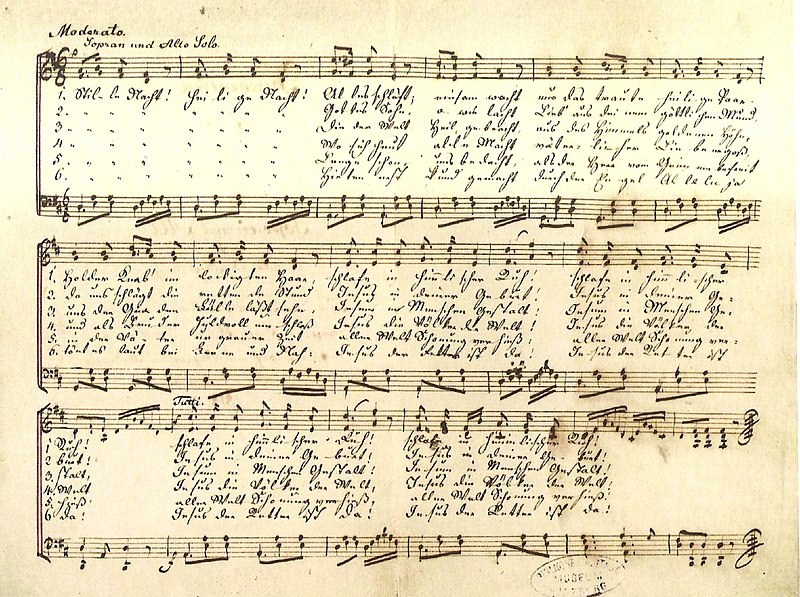
Later that evening, as the two men – backed by the choir – stood in front of the main altar in St. Nicholas Church and sang “Stille Nacht! Heilige Nacht!” for the first time, they could hardly imagine the impact their composition would have on the world. Karl Mauracher, a master organ builder from the Zillertal Valley, often travelled to Oberndorf to work on the organ. While doing his work in St. Nicholas, he obtained a copy of the composition and took it home. Thus, the carol began its journey around the world as a “Tyrolean folk song”. Two travelling families of folk singers, the Strasser siblings and the Rainer singers from the Zillertal Valley (like the Trapp Family Singers of “The Sound of Music” fame) included it into their repertoire while travelled through Europe as mobile merchandise dealers and performed in front of the audience.
During this period, several musical notes were changed and the carol evolved into the melody we know today. In 1839, the Rainers performed “Stille Nacht” for the first time in America at the Alexander Hamilton Monument outside Trinity Church in New York. The song’s popularity was further spread via missionaries.
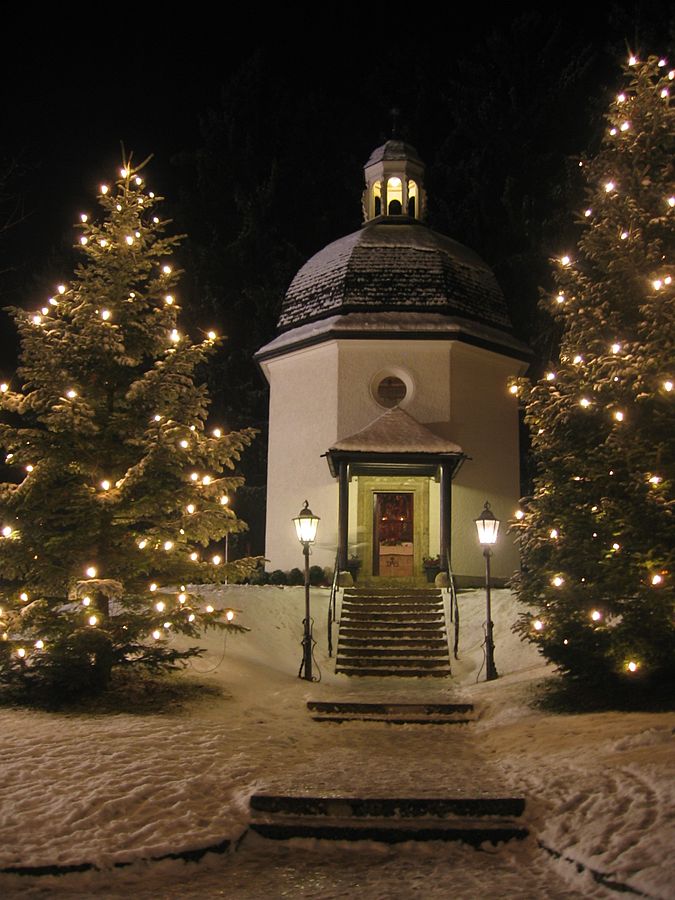
There are thousands of Silent Night arrangements. The melody, considered “traditional” by most, was not exactly by Franz Gruber. Several notes have disappeared in the last two centuries. The original 1818 manuscript has been missing for many years, however we have the Joseph Mohr arrangement (ca. 1820) and several subsequent arrangements by Franz Gruber. By the time the song became famous in Europe, Joseph Mohr had died and the composer was unknown. Although Franz Gruber wrote to music authorities in Berlin that he was the composer, the melody was assumed to be the work of Haydn, Mozart or Beethoven at various times. This controversy was halted in 1994 when a long-lost arrangement of “Stille Nacht” was found, authenticated by Joseph Mohr, in the upper right corner of the arrangement he wrote: “Melodie von Fr. Xav. Gruber”.
Father Joseph Mohr, the author of the lyrics, was born poor in Salzburg in 1792 and died penniless in Wagrain in 1848, where he had been assigned as pastor of the church. He had donated all his earnings to be used for eldercare and education of the children in the area. His superior described him as “a reliable friend of mankind toward the poor, a gentle, helping father”. His memorial is the Joseph Mohr School, located near his tomb.
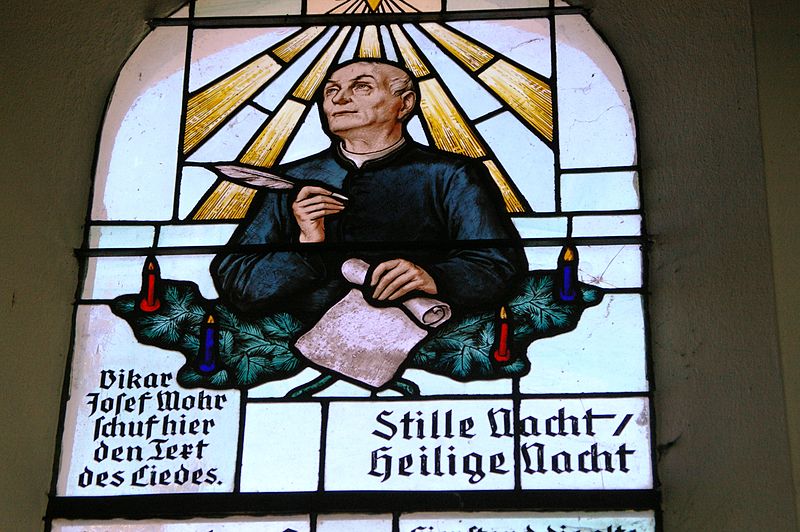
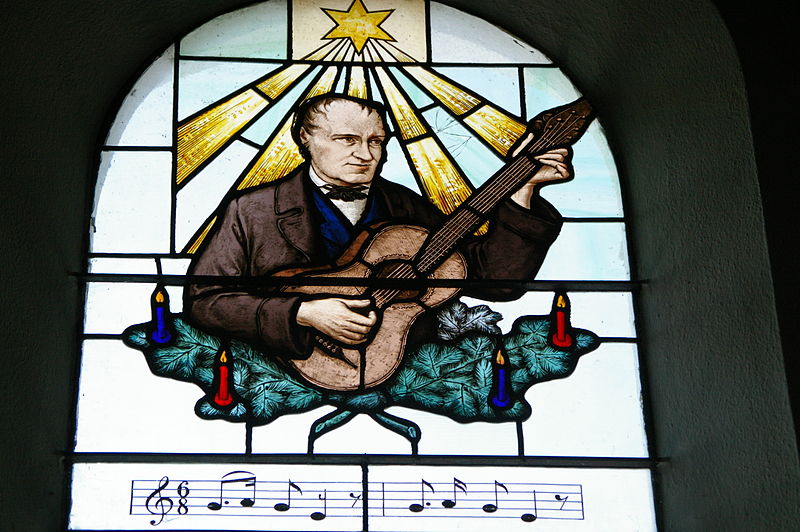
“Silent Night” Austria’s national treasure has a very special significance outside its birthplace: it is a UNESCO Intangible Cultural Heritage and world peace song, an international cultural asset and musical legacy. The great 200th anniversary was duly celebrated in all 13 Silent Night locations in Salzburger Land (city of Salzburg, Oberndorf, Armsdorf, Hallein, Mariapfarr, Hintersee, Wagrain), in Upper Austria (Hochburg-Ach, Ried im Innkreis, Steyr) and in Tyrol (Fügen, Hippach, Achensee Region) as a joint project with new museum openings, special exhibitions in Salzburg and Linz, a new stage play and numerous events, inviting people from all over the world to follow the traces of this magical Christmas song, like a message of peace that has become “The Song Heard ‘Round the World”.
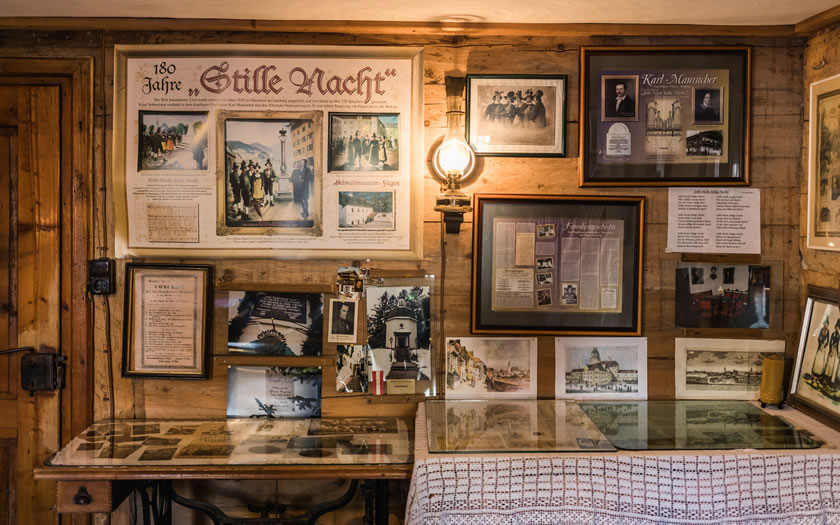
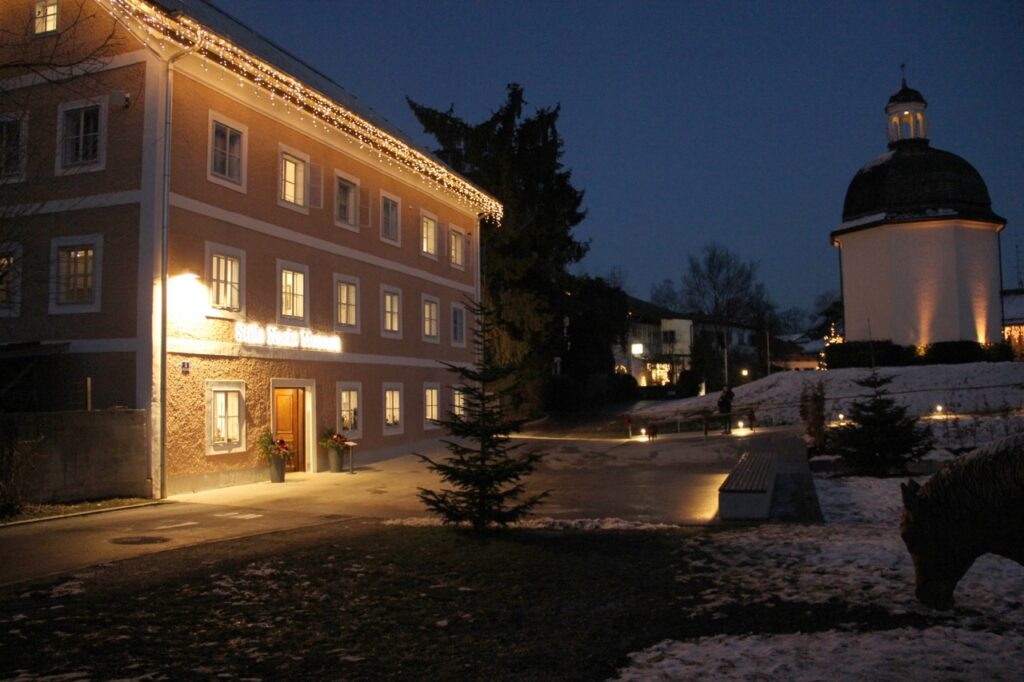
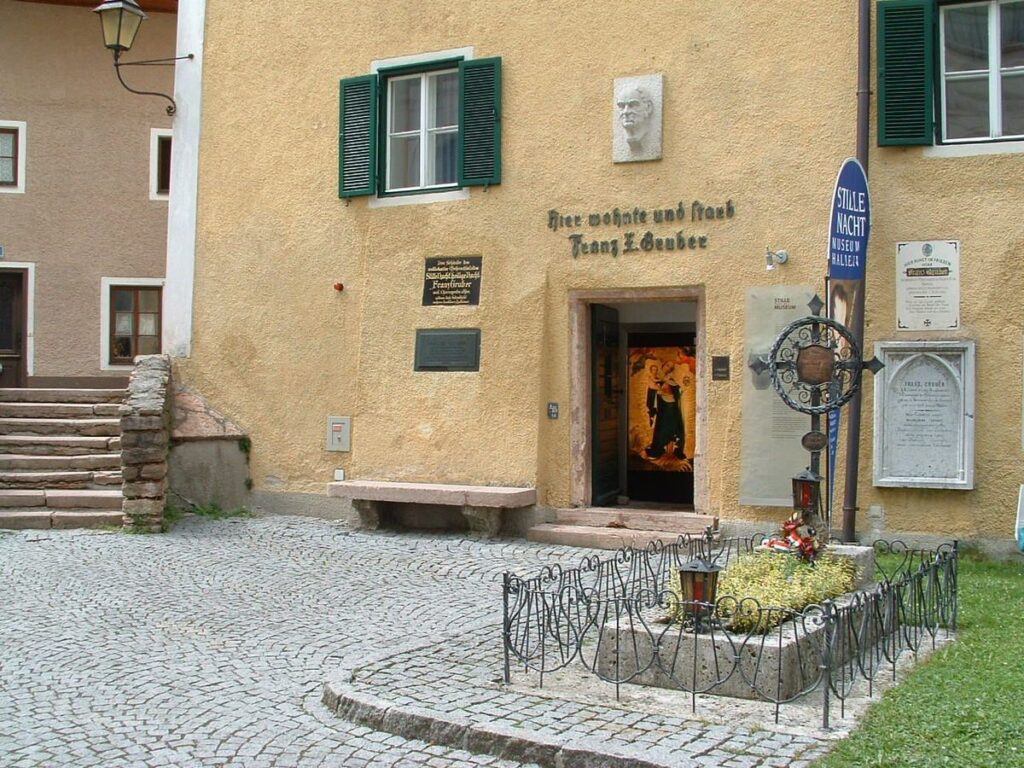
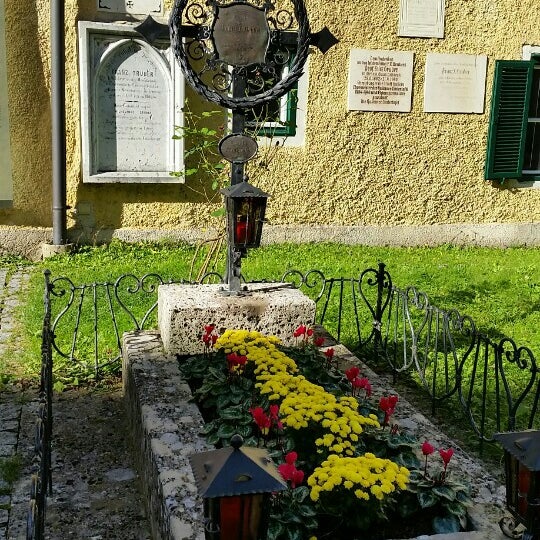
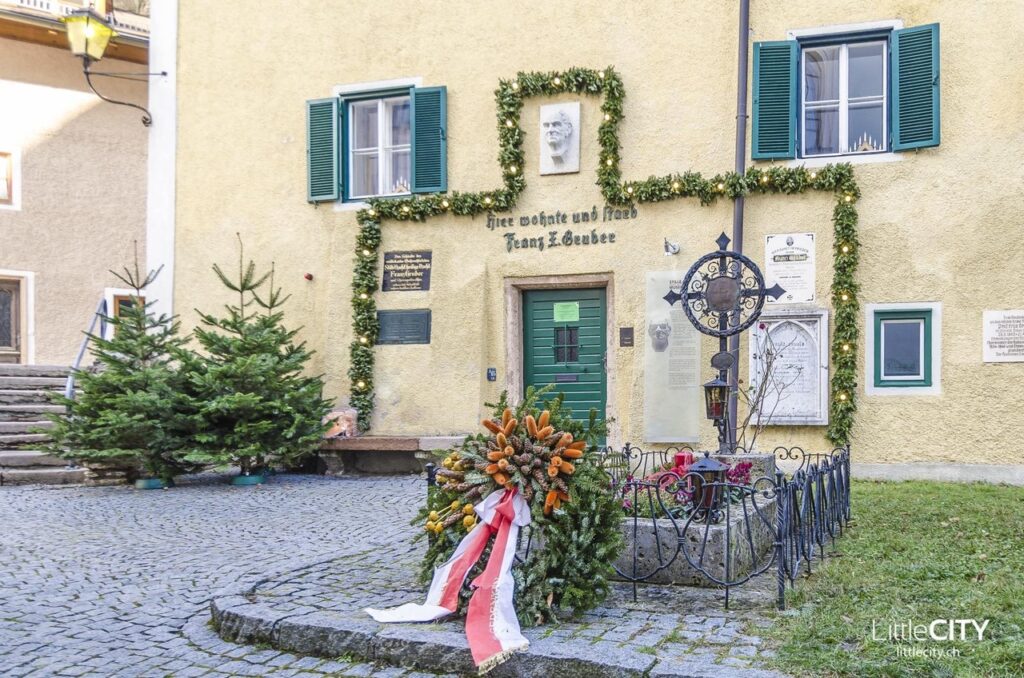
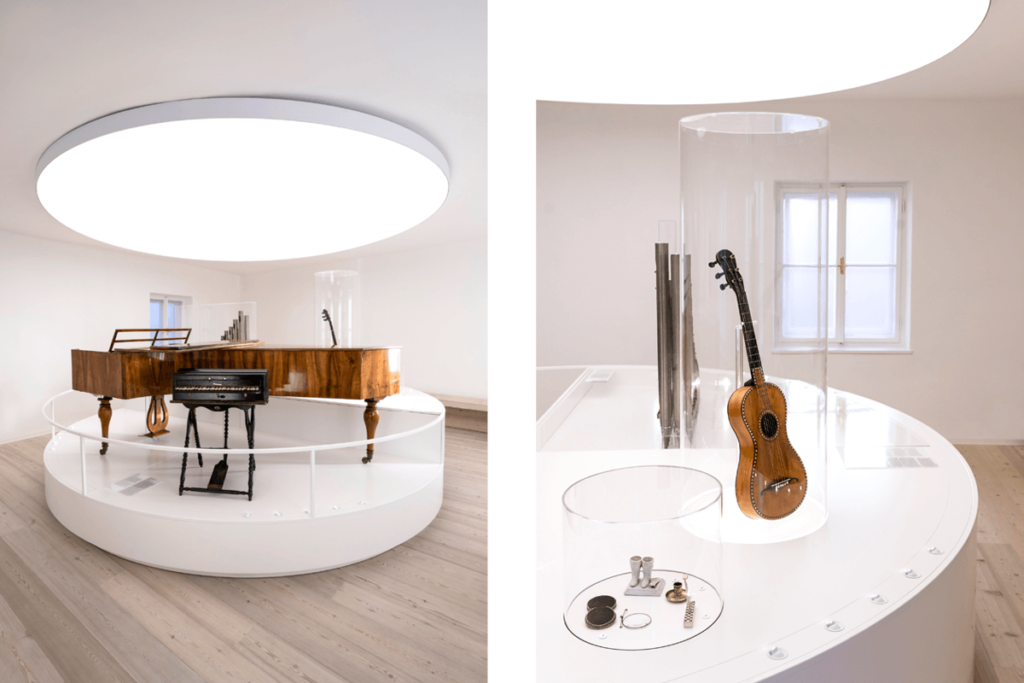
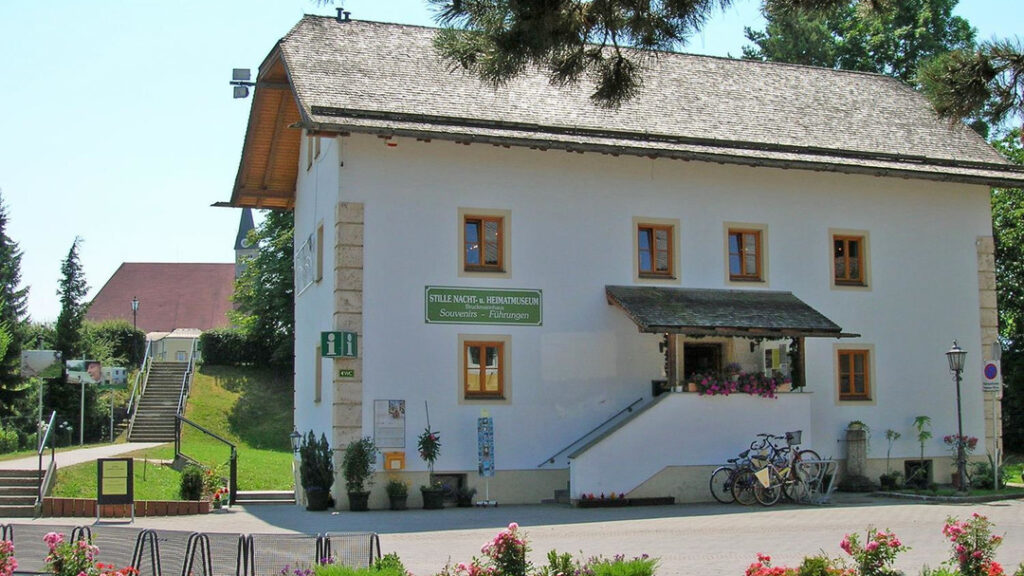
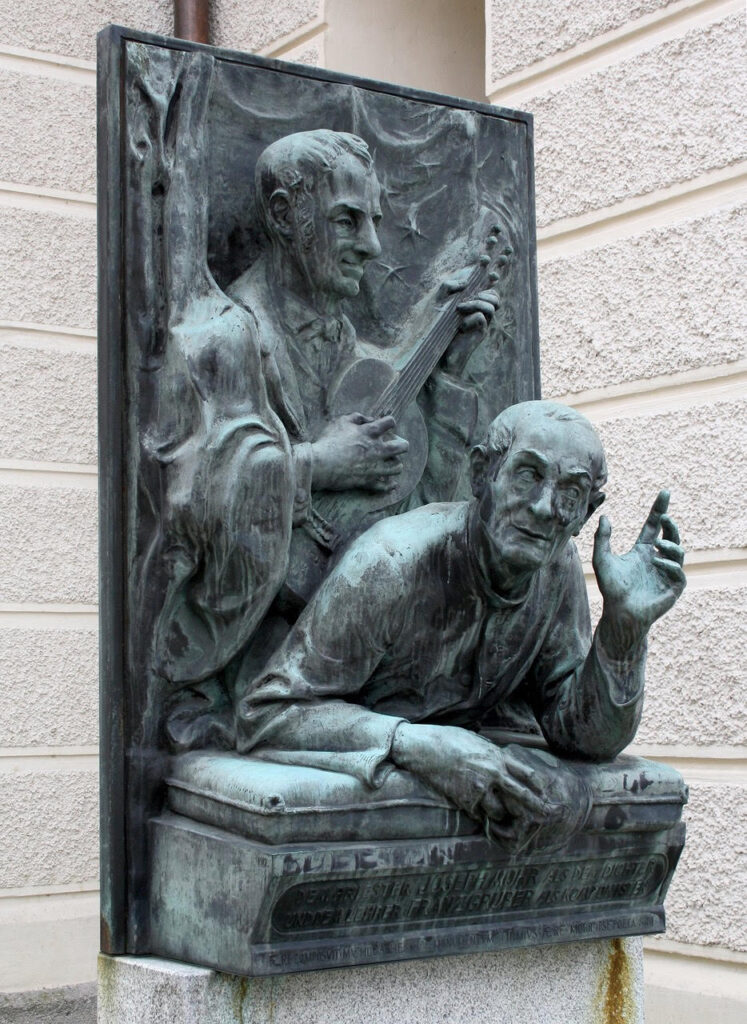
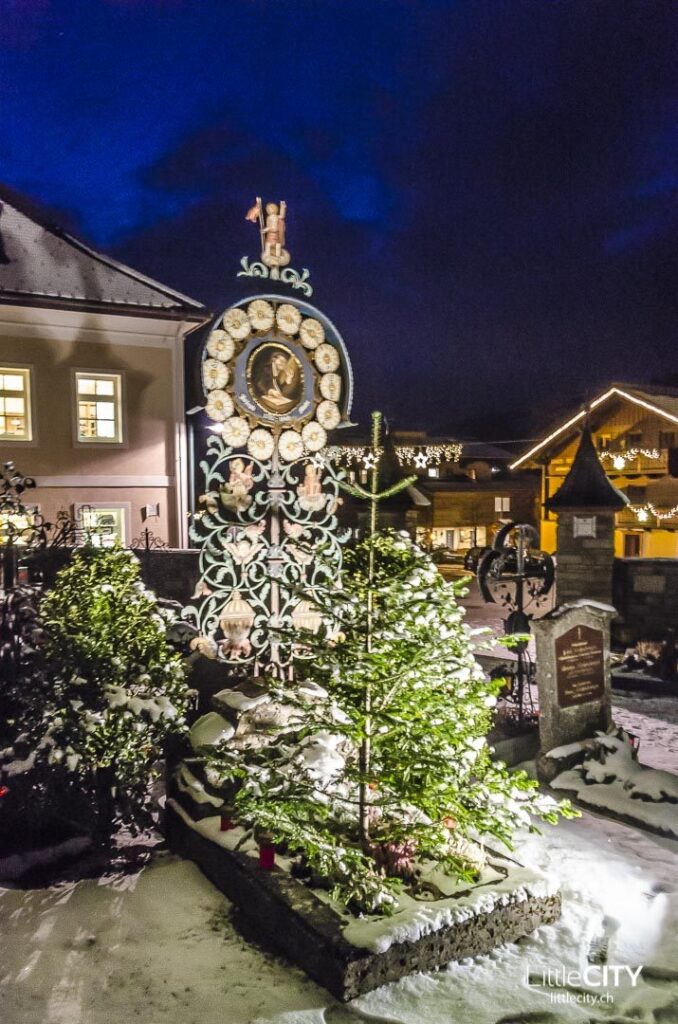
The original text of the poem written by Father Joseph Mohr in English translation:
Stille Nacht (Silent Night)
Silent night, holy night!
All is calm, all is bright.
Round yon Virgin, Mother and Child.
Holy infant so tender and mild,
Sleep in heavenly peace,
Sleep in heavenly peace
Silent night, holy night!
Shepherds quake at the sight.
Glories stream from heaven afar
Heavenly hosts sing Alleluia,
Christ the Saviour is born!
Christ the Saviour is born
Silent night, holy night!
Son of God love’s pure light.
Radiant beams from Thy holy face
With dawn of redeeming grace,
Jesus Lord, at Thy birth
Jesus Lord, at Thy birth
Originally Father Joseph Mohr wrote six verses of the Stille Nacht carol, but the last three verses were believed to be lost. However, a retired teacher, Elisabeth Kruckenhauser found them in a vault, and here they are:
Silent night! Holy night!
Where on this day all power
of fatherly love poured forth
And like a brother lovingly embraced
Jesus the peoples of the world,
Jesus the peoples of the world.
Already long ago planned for us,
When the Lord frees from wrath
Since the beginning of ancient times
A salvation promised for the whole world.
A salvation promised for the whole world.
Silent night! Holy night!
To shepherds it was first made known
By the angel, Alleluia;
Sounding forth loudly far and near:
Jesus the Saviour is here!
Jesus the Saviour is here!


